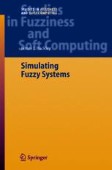Search
Search Results
-
DNA codes over \(GR(2^{3},d)[X]/\langle X^{2},2X \rangle\)
The main results of this paper are in two directions. First, the family of finite local rings of length 4 whose annihilator of their maximal ideals...

-
A method for recognizing facial expression intensity based on facial muscle variations
Expression intensity recognition is a research problem in the field of computer vision and pattern recognition, which can be understood as the...

-
Cyber intrusion detection using dual interactive Wasserstein generative adversarial network with war strategy optimization in wireless sensor networks
Wireless sensor network (WSN) is one of the essential components of a multi-hop cyber-physical system comprising many fixed or moving sensors. There...

-
Dual strategy for single image denoising and generation using deep neural network
Removing noise in the real-world scenario has been a daunting task in the field of natural language processing. Research has shown that Deep Neural...

-
MDGCL: Graph Contrastive Learning Framework with Multiple Graph Diffusion Methods
In recent years, some classical graph contrastive learning(GCL) frameworks have been proposed to address the problem of sparse labeling of graph data...

-
Optimizing a Production Line
The simple production line considered in this chapter is shown in Fig. 20.1. This problem has been adapted from an example in [1]. This situation is...
-
Queuing I: One-Step Calculations
In this chapter we show situations where simulation can produce the same results as fuzzy calculations which employ the extension principle. We argue...
-
Simulation Programs
In this chapter we present some of the GPSS programs used in Chaps. 9–26. We had to omit many programs in order to keep this chapter. less that 20...
-
Summary and Conclusions
The first objective of this book is to explain how many systems naturally become fuzzy systems. The second objective is to show how regular (crisp)...
-
Machine Shop I
The queuing system in this chapter is shown in Fig. 11.1. This application was adopted from a problem in ([1], p.594). We continue this problem in...
-
From Genetic Variation to Probabilistic Modeling
Genetic algorithms ⦓GAs) [53, 83] are stochastic optimization methods inspired by natural evolution and genetics. Over the last few decades, GAs have...
-
Inventory Control II
This chapter continues the inventory control problem studied in the previous chapter. The new system is shown in Fig. 17.1. We have added two things...
-
Project Network Model
The project network diagram is in Fig. 26.1. This problem is modelled after an example in [2]. The project consists of various jobs that must be...
-
Queuing II: No One-Step Calculations
In this chapter we will study the fuzzy system shown in Fig. 5.1 now reproduced as Fig. 9.1. This example was adapted from an example in [1]. The...
-
Modular Neural Networks
We describe in this chapter the basic concepts, theory and algorithms of modular and ensemble neural networks. We will also give particular attention...
-
Type-1 Fuzzy Logic
This chapter introduces the basic concepts, notation, and basic operations for the type-1 fuzzy sets that will be needed in the following chapters....
-
Human Recognition using Face, Fingerprint and Voice
We describe in this chapter a new approach for human recognition using as information the face, fingerprint, and voice of a person. We have described...
-

-

-

